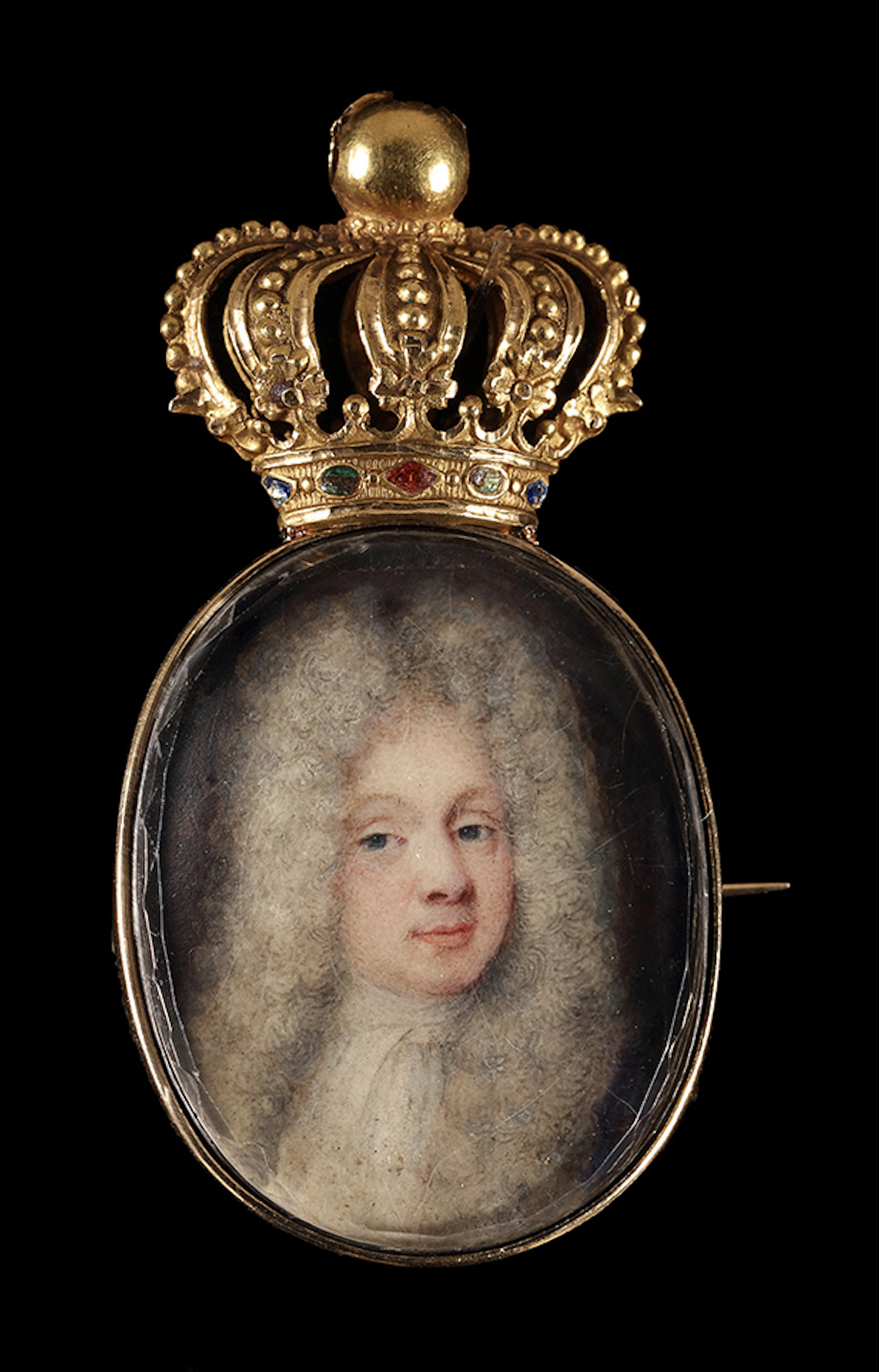GERMAN SCHOOL
Portrait miniature of a Nobleman, possibly a member of the German Royal family or Elector, wearing white stock and full, powdered wig; circa 1725
Watercolour on vellum
Set into a metal frame with brooch attachment, the crown decorated with coloured enamel; crystal glass cover
Oval,
Provenance:
Private Collection, Europe
SOLD
“This type of miniature would have been gifted as a personal reward to a valued member of the court.”
This portrait of a nobleman is set into a frame usually reserved for those with the title of Elector, a ruler of a German principality entitled to vote in the election of the Holy Roman Emperor. Originally, the frame may have had a crucifix above the crown. This type of miniature would have been gifted as a personal reward to a valued member of the court.
This practice followed Louis XIV, who gave his image (usually from Petitot’s workshop) set into what was termed a boîte à portrait (French for 'box with a portrait'). The frames on these enamel portraits were usually set with diamonds and recipients of such presents in France were tacitly allowed to return them to the Ministry of Foreign Affairs in exchange for cash. While such practices may not have been so explicit in the rest of Europe, the portraits were frequently dismantled and the diamonds sold. This example shows how the practice was quickly adopted by sovereigns of other countries, especially in northern Europe.
The sitter here remains unidentified but bears some resemblance to Charles VII (1697-1745) who was Prince-Elector of Bavaria from 26 February 1726 and Holy Roman Emperor from 24 January 1742 to his death. He was also King of Bohemia (as Charles III) from 1741 to 1743.

